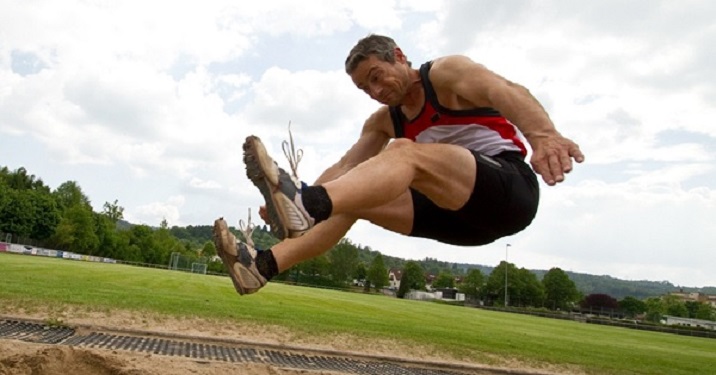Long Jump – How to Play?
It is wise to practise the sail techniques effectively for the improvement of take-off techniques. Through this practise, the upright trunk will be maintained and striding position of the free leg will be improved.
We can divide basic jumping into three distinct sections −
- Approach
- Take-off
- Flight
Let’s discuss about these techniques in detail and try to understand how to apply them effectively in our practise.
Long Jump − Approach
The number of strides varies depending upon the level of competition. For primary school performers, the number of strides varies in between 11 to 15 whereas for senior athletes, the number of strides varies between 19 and 23. Due to low muscular strength, the approach run for women is 3-4 metre less in comparison to men.
A systematic rhythm must be set to achieve a high horizontal velocity. To achieve this, the speed pattern must be modified. Maintain this rhythm till the take-off point and at the point of take-off, lower your hip and rise with a sudden force to gain an instant momentum. From the normal stride, the sinking of hip stride should be 25 cm below.

It is a general practice that in the approach run, if an athlete is running in 19 strides, then his take-off foot is going to touch the ground 10 times. Hence to mark the starting point, the player initially runs backward from the take-off point. He continues to run till his take-off foot touches the ground 10 times.
The moment it touches the ground, the coach will mark that point. This type of practice will be done minimum six times. The farthest point from the take-off point is taken as starting point. The wind is also a factor in it. If the wind is blowing from the back the run up distance will be longer and vice versa.
Long Jump − Take-off
When the athlete’s leg gets on the board during the take-off phase, its position is much ahead of the centre of gravity and this helps in imposing maximum vertical velocity. In addition to this, an athlete can attain more speed by making the upward acceleration of his non take-off leg, arms and free limbs. To impose vigorous impulses, strengthen your take-off leg as much as possible.
You need to keep the following things in mind −
-
Extensions should be made up to maximum with the help of ankle, toe, hip, and knee.
-
Position of your free thigh should be parallel to the ground.
-
Your opposite arm should do the coordination.
-
Chest and back should not lean down and your eyes should look forward.
-
Instead of making variable speed, maintain a constant rhythm throughout the approach.
Determination of take-off leg is very simple. Just kick a ball with your left leg, having your right leg on the ground. If the right leg maintains the balance of your body well, then it is your take-off leg and vice versa.

Long Jump − Flight
Flight is the most important part of the jumping. You need to keep the following points in mind during the Flight −
-
Free leg should be raised to a horizontal position during the take-off.
-
Position of the free leg however should trail back as much as possible during the whole flight.
-
Best position for the hands is above the shoulder level.
-
Keep the trunk in the upright position as much as possible otherwise it will make obstacles in moving your leg up during the landing time.
During the flight, it is crucial that you maintain perfect alignment between your head, back, and hips.